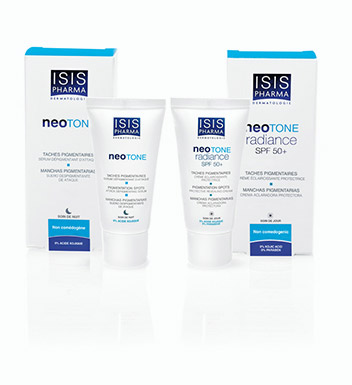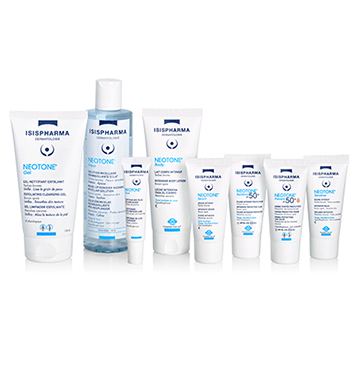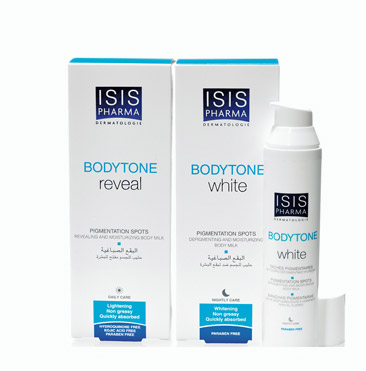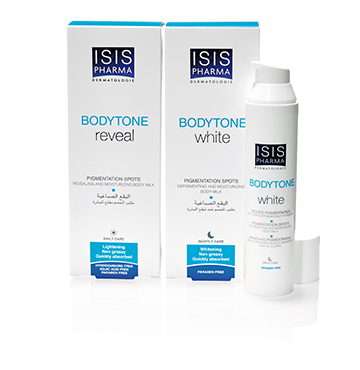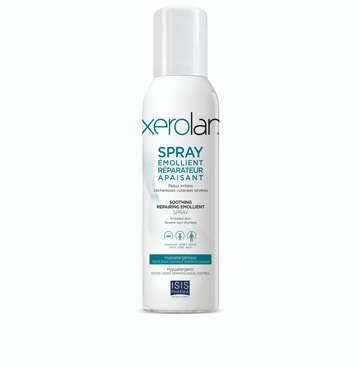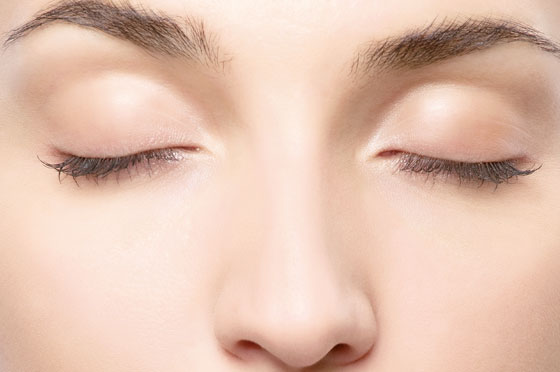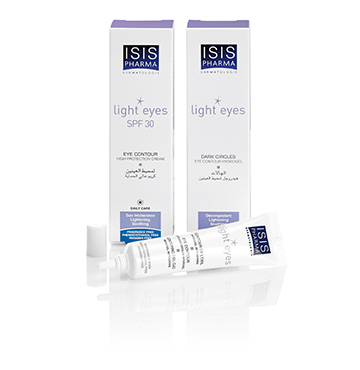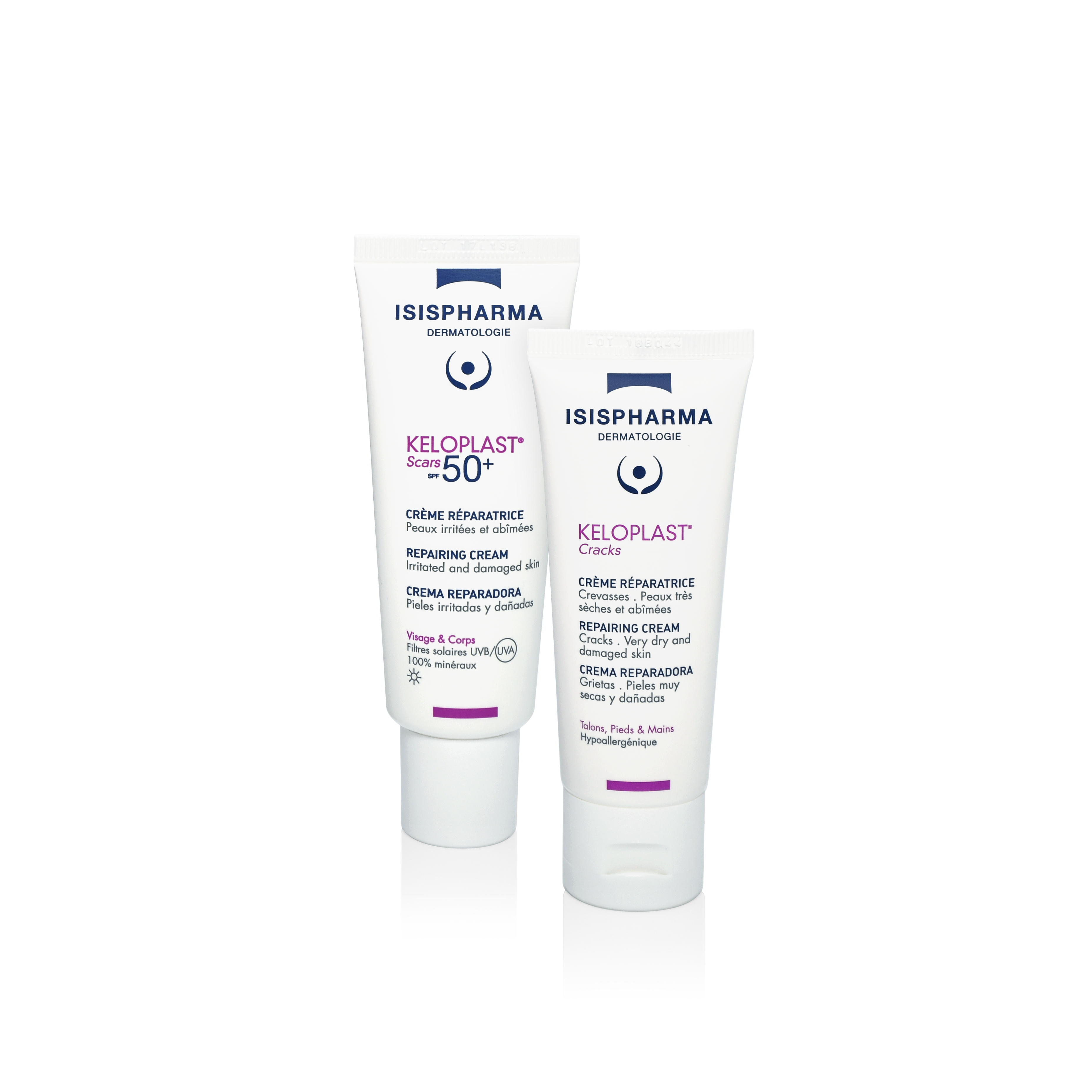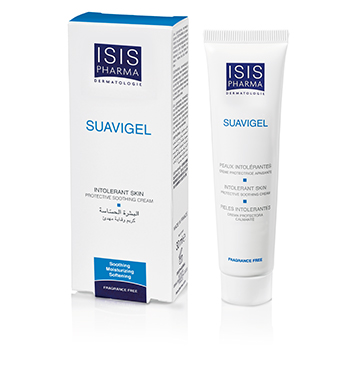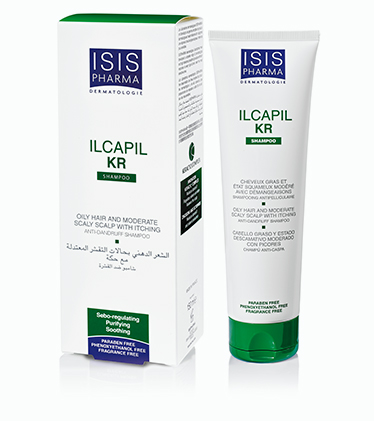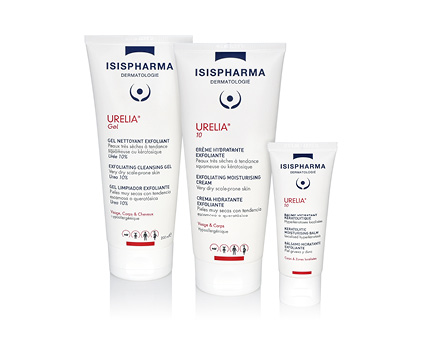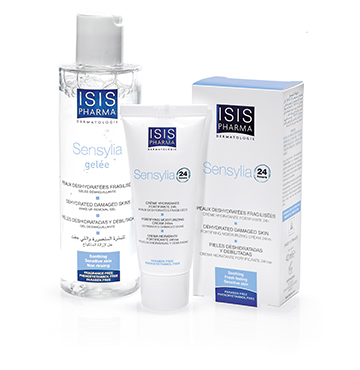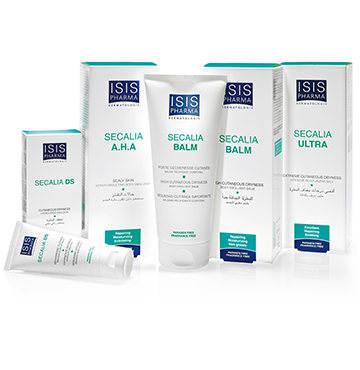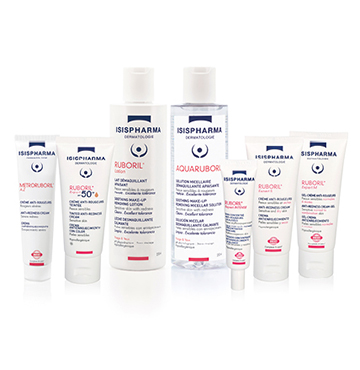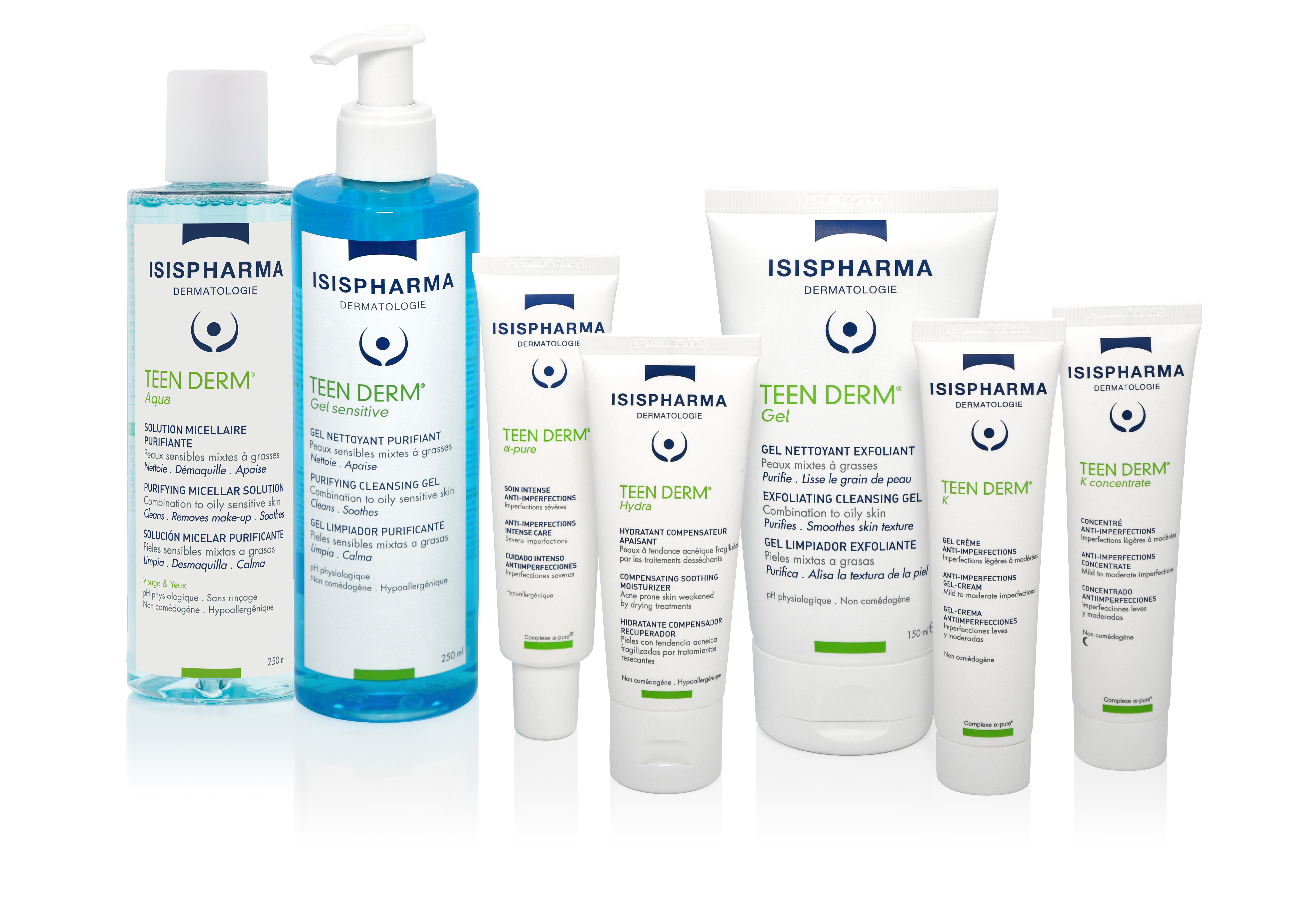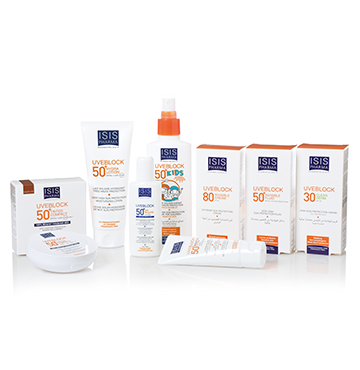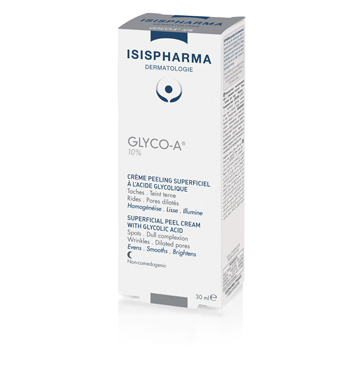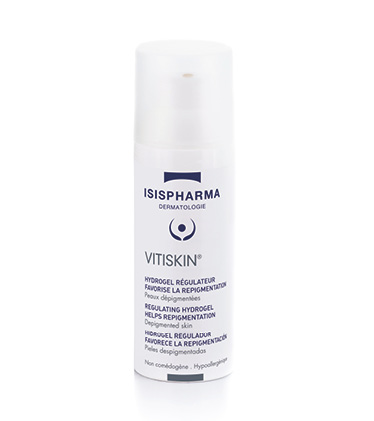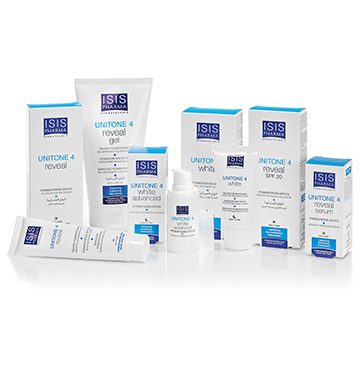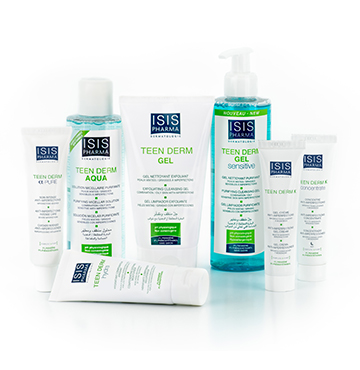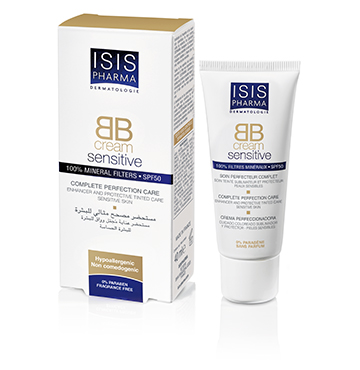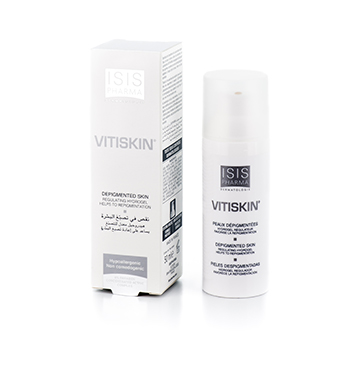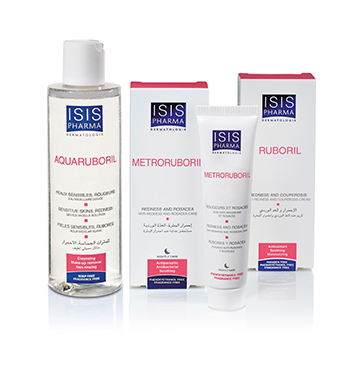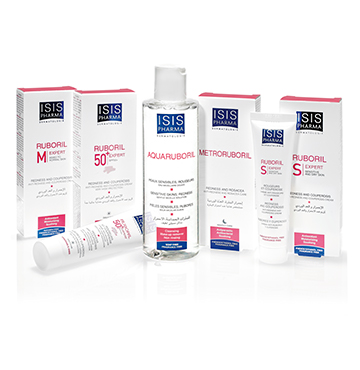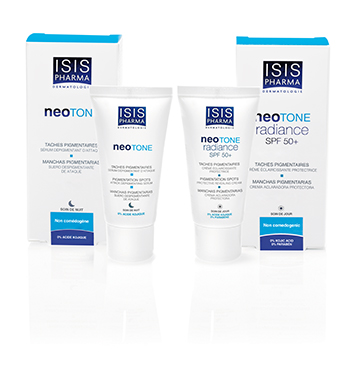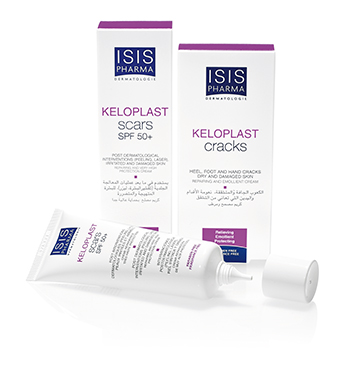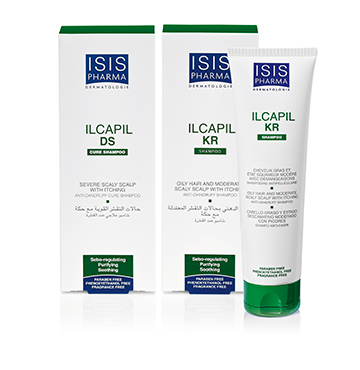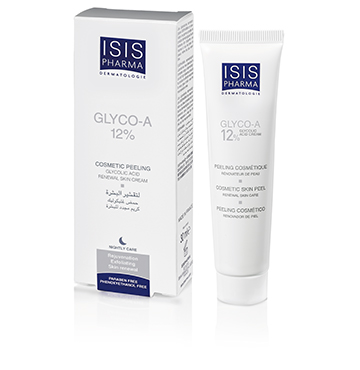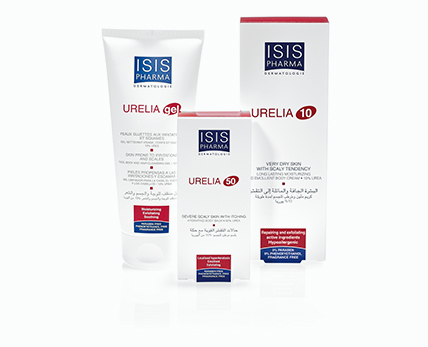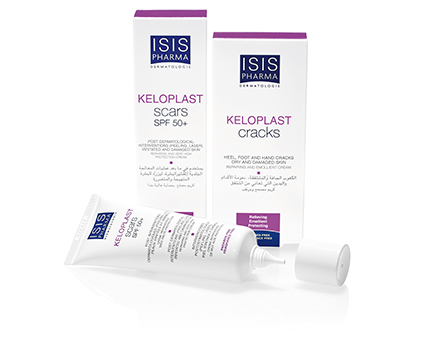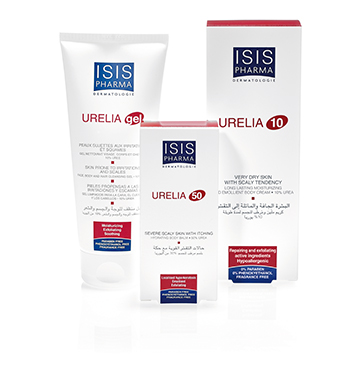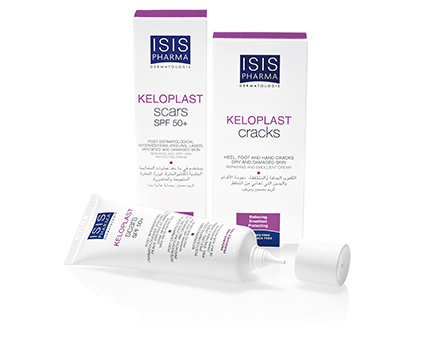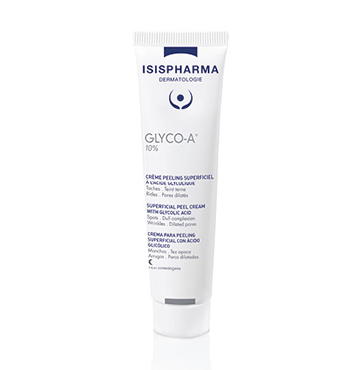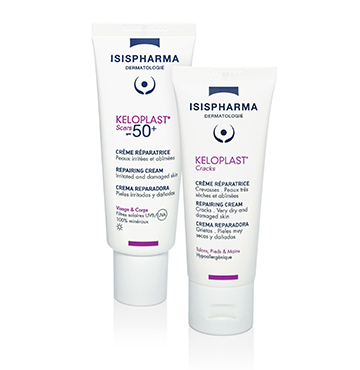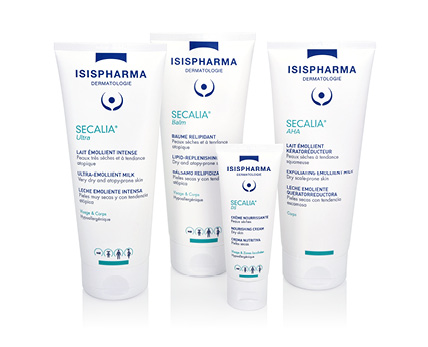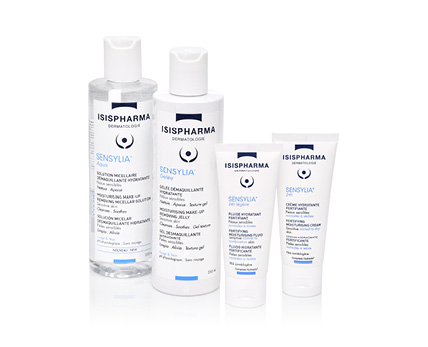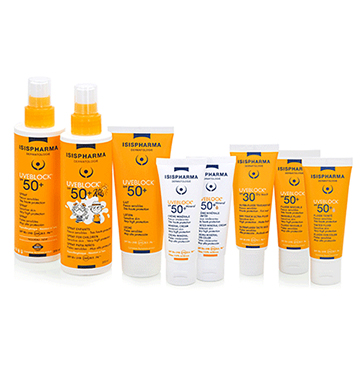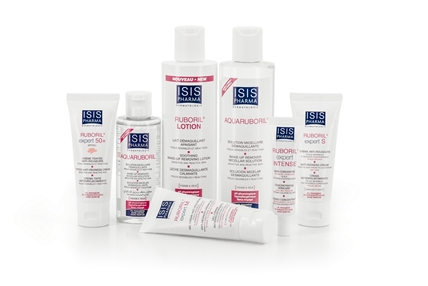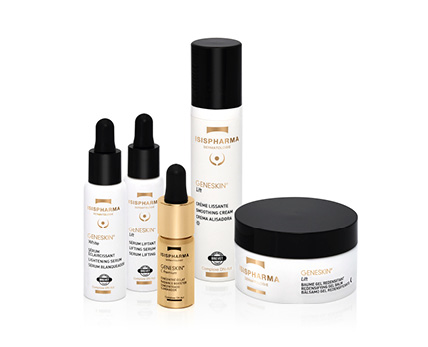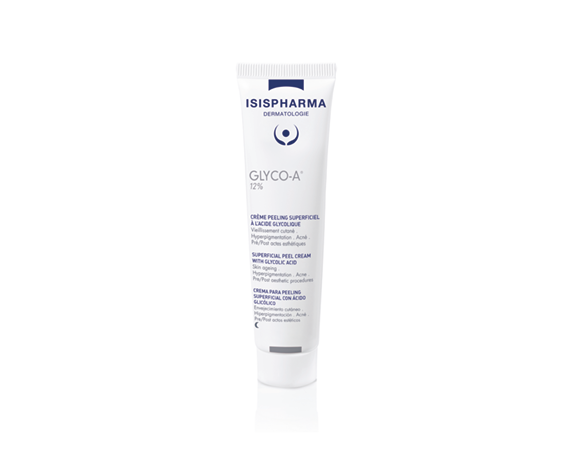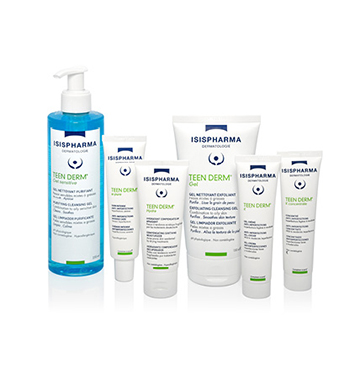The exact cause of acne is unknown, but doctors believe it results from several related factors.
One important factor is an increase in hormones called androgens (male sex hormones). These increase in both boys and girls during puberty and cause the sebaceous glands to enlarge and make more sebum.
Hormonal changes related to pregnancy or starting or stopping birth control pills can also cause acne.
Repeated sun exposure, cutaneous skin ageing, hormonal diseases, post inflammatory hyperpigmentation (PIH) or drugs induced photosensitivity, involve the appearance of different types of brown spots :
Although the exact cause of rosacea is unknown, various theories about the disorder’s origin have evolved over the years.
Facial blood vessels may dilate too easily, and the increased blood near the skin surface makes the skin appear red and flushed. Various lifestyle and environmental factors – called triggers – can increase this redness response.
Acne-like bumps may appear, often in the redder area of the central face. This may be due to factors related to blood flow, skin bacteria, microscopic skin mites (Demodex), irritation of follicles, sun damage of the connective tissue under the skin, an abnormal immune or inflammatory response, or psychological factors. None of these possibilities has been proven, although potential inflammatory pathways have been identified in recent ongoing research – including an immune response triggered by a type of antimicrobial protein known as cathelicidin.
A recent study also found that certain bacteria present on otherwise harmless Demodex mites could prompt an inflammatory response in rosacea patients, and other research identified two genetic variants that may be linked to rosacea, located in areas of the genome that are also associated with autoimmune disease.
There is no single cause of dry skin. Dry skin causes can be classified as external and internal. External factors are the most common underlying cause and are the easiest to address.
External factors that cause dry skin include cold temperatures and low humidity, especially during the winter when central heaters are used.
Internal factors include overall health, age, genetics, family history, and a personal history of other medical conditions like atopic dermatitis. In particular those with thyroid disease are more prone to developing dry skin, over-washing with harsh soaps, overuse of sanitizers and cleaning agents (alcohol), cold temperature, low humidity. Certain simple lifestyle changes can help prevent you from developing dry skin.
Try to:
- • shower every other day
- • keep your bathing time to between five and 10 minutes
- • avoid hot showers
- • use a moisturizing soap
- • avoid scrubbing dry skin patches
- • pat your skin dry with a soft towel
- • use a moisturizer immediately after showering
- • use a humidifier in the home
- • drink plenty of water
Common causes of epidermal dehydration include lifestyle choices, such as smoking, medication or illness; a diet high in salt or stimulants, such as coffee; environmental factors, such as seasonal changes and the artificial indoor environments caused by both heating and air conditioning; or sun damage, which can cause moisture loss and lead to dermal dehydration.
Additionally, those with redness-prone or rosacea skin can often experience a higher rate of epidermal dehydration, because the heat present with their condition can encourage TEWL*, especially in the instance of impaired barrier. Although drinking enough water is vitally important to hydrated skin, this alone cannot prevent dehydration.
Even if a person drinks the right amount of water, if the skin’s barrier is impaired, the water is likely to be lost through TEWL*.
*TEWL: Transepidermal water loss, is defined as the measurement of the quantity of water that passes from inside a body through the epidermal layer (skin) to the surrounding atmosphere via diffusion and evaporation processes.
People who develop vitiligo usually first notice white patches (depigmentation) on their skin. These patches are more commonly found on sun-exposed areas of the body, including the hands, feet, arms, face and lips. Other common areas for white patches to appear are the armpits and groin and around the mouth, eyes, nostrils, navel, genitals, and rectum.
Vitiligo generally appears in one of three patterns:
- – focal pattern: depigmentation limited to one or only a few areas
- – segmental pattern: depigmented patches that develop on one side of the body only
- – generalized pattern: the most common pattern. Depigmentation occurs symmetrically on both sides of the body.
In addition to white patches on the skin, people with vitiligo may have premature graying of the scalp hair, eyelashes, eyebrows and beard. People with dark skin may notice a loss of color inside their mouths.
The process of skin inflammation is complex and is still not completely understood. When the skin is exposed to a “triggering” stimulus, such as UV radiation, an irritant (e.g. soaps or fragrances), or to allergens, the cells in the skin produce a variety of inflammatory “hormones” called cytokines and chemokines. These “inflammatory messengers” bind to specific receptors on target cells and stimulate the production of additional inflammatory signaling “hormones”. Some of these cause vasodilation while others activate nerve cells. Still other cytokines cause immune cells to leave the blood and migrate into the skin where they then produce more inflammatory hormones, as well as enzymes, free radicals, and chemicals that damage the skin. The end result of the initial triggering event is the amplification of a large inflammatory response that, while designed to help the skin fight infection from invading bacteria, actually causes considerable damage to the skin.
In its typical form, psoriasis results in patches of thick, red (inflamed) skin covered with silvery scales. These patches, which are sometimes referred to as plaques, usually itch or feel sore. They most often occur on the elbows, knees, other parts of the legs, scalp, lower back, face, palms, and soles of the feet, but they can occur on skin anywhere on the body. The disease may also affect the fingernails, the toenails, and the soft tissues of the genitals, and inside the mouth.
Repeated sun exposure, cutaneous skin ageing, hormonal diseases, post inflammatory hyperpigmentation (PIH) or drugs induced photosensitivity, involve the appearance of different types of brown spots :
Common causes of epidermal dehydration include lifestyle choices, such as smoking, medication or illness; a diet high in salt or stimulants, such as coffee; environmental factors, such as seasonal changes and the artificial indoor environments caused by both heating and air conditioning; or sun damage, which can cause moisture loss and lead to dermal dehydration.
Additionally, those with redness-prone or rosacea skin can often experience a higher rate of epidermal dehydration, because the heat present with their condition can encourage TEWL*, especially in the instance of impaired barrier. Although drinking enough water is vitally important to hydrated skin, this alone cannot prevent dehydration.
Even if a person drinks the right amount of water, if the skin’s barrier is impaired, the water is likely to be lost through TEWL*.
*TEWL: Transepidermal water loss, is defined as the measurement of the quantity of water that passes from inside a body through the epidermal layer (skin) to the surrounding atmosphere via diffusion and evaporation processes.
There is no single cause of dry skin. Dry skin causes can be classified as external and internal. External factors are the most common underlying cause and are the easiest to address.
External factors that cause dry skin include cold temperatures and low humidity, especially during the winter when central heaters are used.
Internal factors include overall health, age, genetics, family history, and a personal history of other medical conditions like atopic dermatitis. In particular those with thyroid disease are more prone to developing dry skin, over-washing with harsh soaps, overuse of sanitizers and cleaning agents (alcohol), cold temperature, low humidity. Certain simple lifestyle changes can help prevent you from developing dry skin.
Try to:
- • shower every other day
- • keep your bathing time to between five and 10 minutes
- • avoid hot showers
- • use a moisturizing soap
- • avoid scrubbing dry skin patches
- • pat your skin dry with a soft towel
- • use a moisturizer immediately after showering
- • use a humidifier in the home
- • drink plenty of water
The process of skin inflammation is complex and is still not completely understood. When the skin is exposed to a “triggering” stimulus, such as UV radiation, an irritant (e.g. soaps or fragrances), or to allergens, the cells in the skin produce a variety of inflammatory “hormones” called cytokines and chemokines. These “inflammatory messengers” bind to specific receptors on target cells and stimulate the production of additional inflammatory signaling “hormones”. Some of these cause vasodilation while others activate nerve cells. Still other cytokines cause immune cells to leave the blood and migrate into the skin where they then produce more inflammatory hormones, as well as enzymes, free radicals, and chemicals that damage the skin. The end result of the initial triggering event is the amplification of a large inflammatory response that, while designed to help the skin fight infection from invading bacteria, actually causes considerable damage to the skin.
People who develop vitiligo usually first notice white patches (depigmentation) on their skin. These patches are more commonly found on sun-exposed areas of the body, including the hands, feet, arms, face and lips. Other common areas for white patches to appear are the armpits and groin and around the mouth, eyes, nostrils, navel, genitals, and rectum.
Vitiligo generally appears in one of three patterns:
- – focal pattern: depigmentation limited to one or only a few areas
- – segmental pattern: depigmented patches that develop on one side of the body only
- – generalized pattern: the most common pattern. Depigmentation occurs symmetrically on both sides of the body.
In addition to white patches on the skin, people with vitiligo may have premature graying of the scalp hair, eyelashes, eyebrows and beard. People with dark skin may notice a loss of color inside their mouths.
Sun protection should be used every day if you are going to be in the sun for more than 20 minutes. They can be applied under makeup. The sun’s reflective powers are great, for examples +17% on sand and +80% on snow. Don’t reserve the use of these products only for sunny summer days. Even on a cloudy day, 80 percent of the sun’s ultraviolet rays pass through the clouds.
Do you have a question ?
Our experts can help you.






